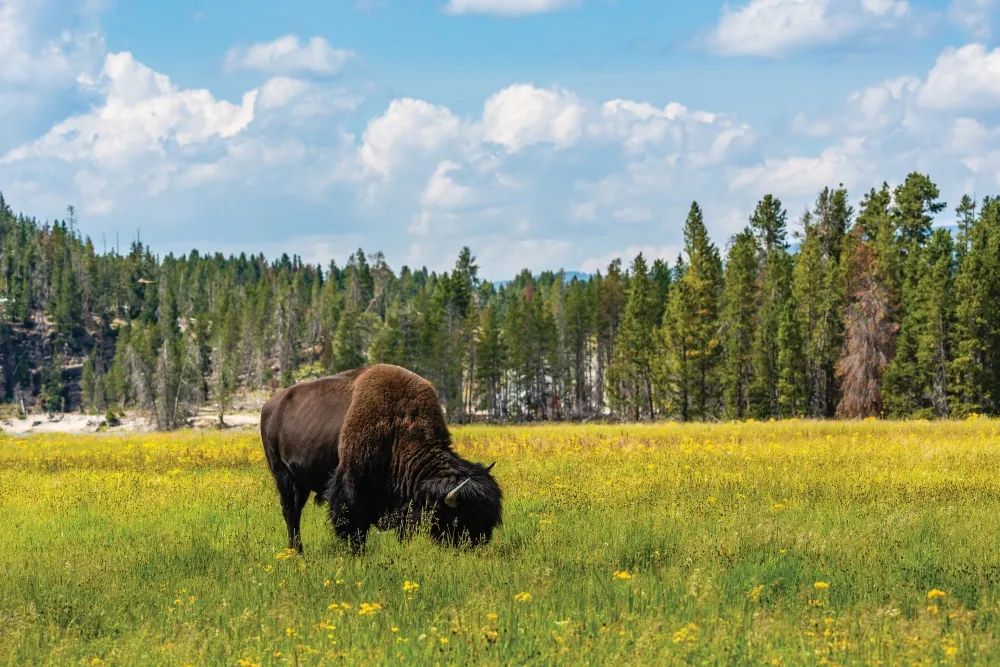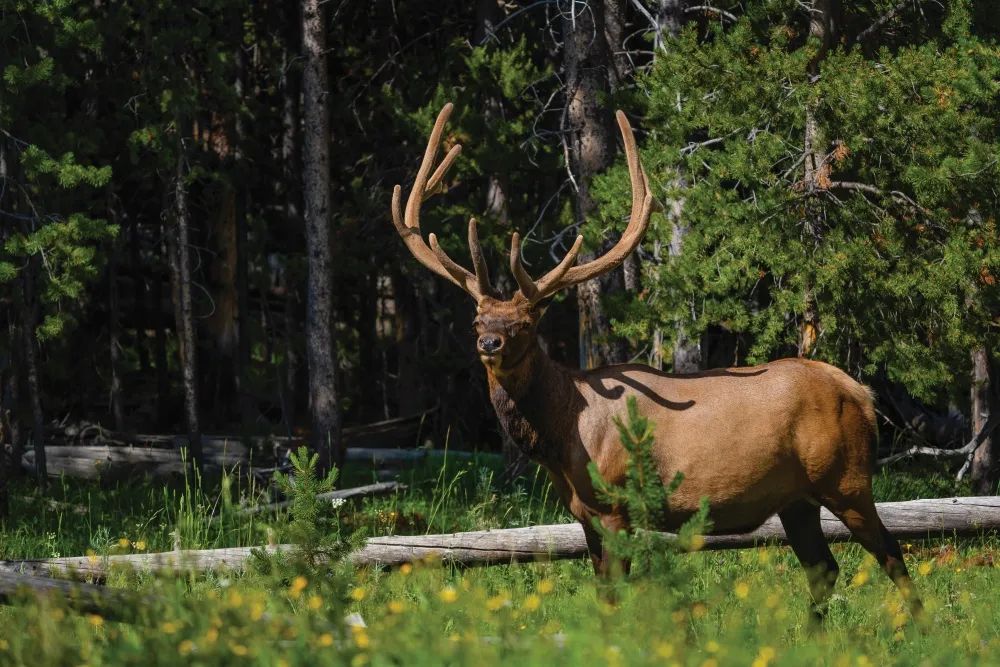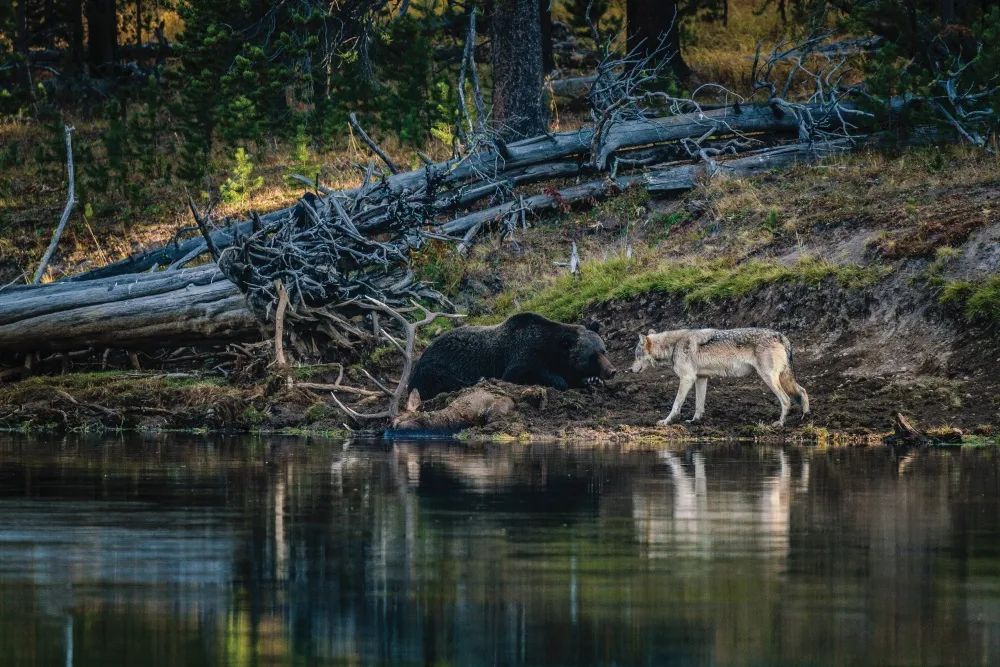
Yellowstone Science: Acoustic Atlas
June 2022
by stephanie hobby | photos by seth kroft
Yellowstone National Park is a place of unparalleled wonder and awesome beauty. Here you’ll find majestic waterfalls, roaming wildlife, and geysers bursting up from the depths of the earth. But close your eyes, and the distinctive sounds of Yellowstone will be unmistakable: waterfalls trickle or thunder, wildlife howl, grunt and sing, while geysers gurgle and hiss. It’s a place like no other on Earth, and the Park’s soundscapes are as incomparable as its landscapes.
Even though we are primarily visual creatures, we can’t close our ears like we can with our eyes. Our brains are constantly filtering through the noises hitting our ears, alerting us to what’s important and what’s just noise.
While we might expect absolute silence to be serene, it’s actually anything but. Around the world, there are a handful of genuinely sound-absorbent rooms designed for scientific research where no sounds eek through or echo off of the walls. Those who have spent time in these chambers report that it’s downright unnerving. In fact, it’s so disorienting that standing upright becomes difficult, and many choose to sit down. The longest anyone has been able to stay in such a room is around a measly hour, and when they come out, some are too dizzy to walk.
Auditory input is woven into our lives, but sounds can shift. Like the sounds of a prairie before people built cities, what was once ubiquitous can be changed or forgotten. And in a place like Yellowstone, recording soundscapes is akin to preserving a national treasure.
To curate these natural soundscapes, Jeff Rice and Kenning Arlitsch, dean of the library at Montana State University, founded Acoustic Atlas in 2013 to document the sounds of various ecosystems across Montana and the American West. “That’s one of the reasons we called it an atlas. These sounds are very connected to the places where they occur. They’re not abstract, and the information they offer is very important,” Rice said. Yellowstone’s proximity to MSU made it a natural first step; Rice and Arlitsch connected with the National Park Service and created partnerships to support additional recordings and broaden the scope of their work.
In the late 1990s, Yellowstone National Park launched its soundscape monitoring program, now the longest-running effort of its kind. The goal was to focus on winter use, specifically the magnitude and impacts of noise generated by snowmobiles and snowcoaches. Ecosystems are more vulnerable in winter, and that evaluation led to the current regulations on over-snow vehicles in the Park.
Since then, the program has broadened and tracks change within the Greater Yellowstone Ecosystem. Putting a microphone and recorder out in the woods for weeks at a time is a relatively cheap and effective way for researchers to keep an ear on what is happening in the Park. Microphones are typically more sensitive than human ears and can pick up details that might otherwise be missed. Scientists can analyze recordings to determine the number of animals in a specific region over a period of time or the effect of human noise on animals.
And startlingly, human-caused noise is becoming more and more apparent in these recordings, even in more remote parts of the Park. Studies are ongoing, but there is concern that non-natural sounds interfere with the natural environment and disrupt crucial ecosystems.

Animals use sound to communicate and call for mates. Predators and prey alike use sound to warn of an impending attack or as an alert that a potential meal is nearby. Even human visitors are not immune to non-natural noise; many come to the national parks seeking refuge, and complaints about human-caused sounds have become common.
“Any sound recording is a historical document. It’s a piece of data that tells you about what is happening in a specific place and time. And of course, unfortunately, the environment is being threatened and is changing due to climate change, habitat loss, etc. So these recordings, in addition to being really inspiring and interesting, also provide a baseline for changes as they occur,” Rice explained.
The Atlas has the added benefit of being used in various ways, whether it’s simply for listening pleasure or as special effects in films.

To check out the Acoustic Atlas and listen to their catalog for yourself, visit www.acousticatlas.org.
For Rice, it’s hard to pin down a specific favorite soundscape within the Park, but the larger mammals hold a special appeal. “I love the fact that there are just so many big mammals, bison, elk, and wolves; the iconic species of the West. They all make these great dramatic sounds, and it's really hard to beat,” Rice said. “We’ve got some really nice recordings of wolves up there that send a chill down your spine. And the bison have these deep bellows. Often, you can’t get close enough to really hear the full extent of the sound, but if you can get a microphone close enough, and it doesn’t get stomped, you can just feel the drama of it. They’re incredible sounds.”
Originally printed in the June 2022 issue of Simply Local Magazine
Never miss an issue, check out SLM's digital editions here!





